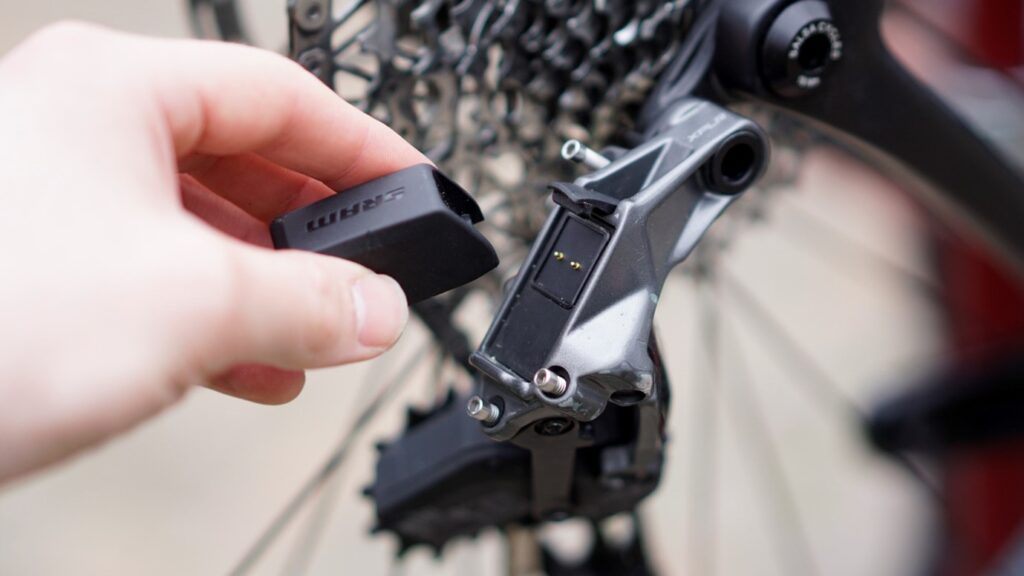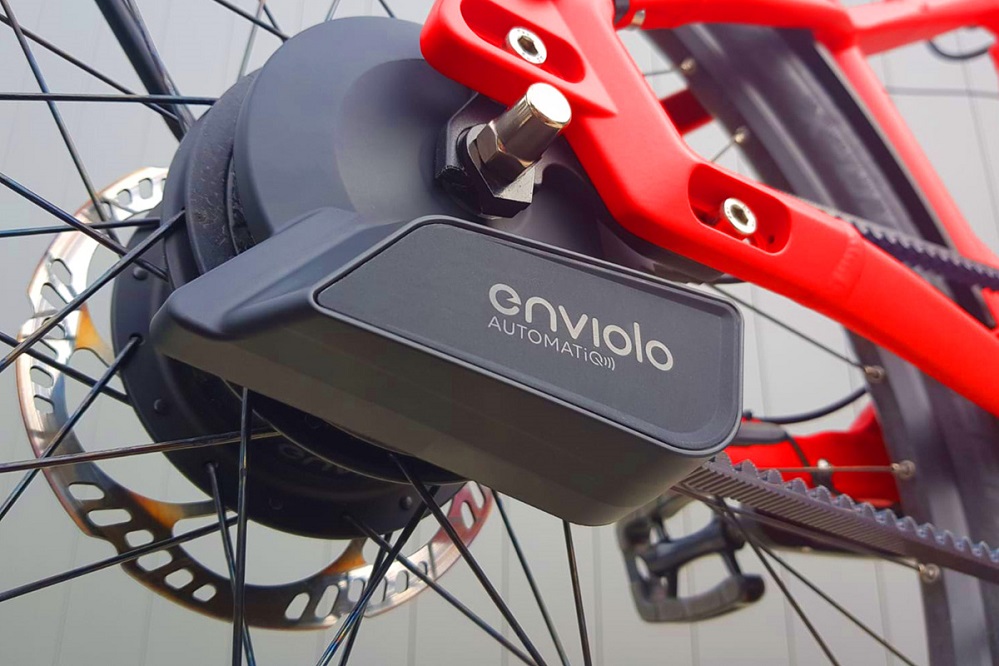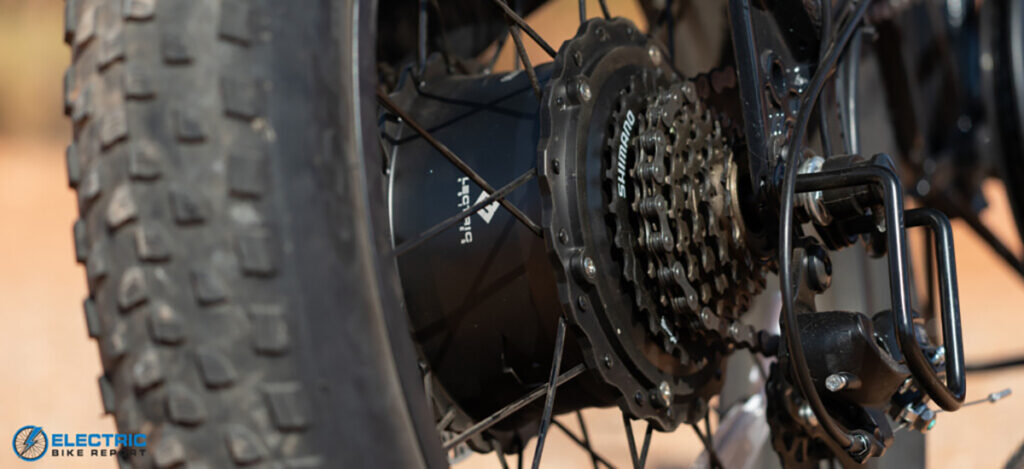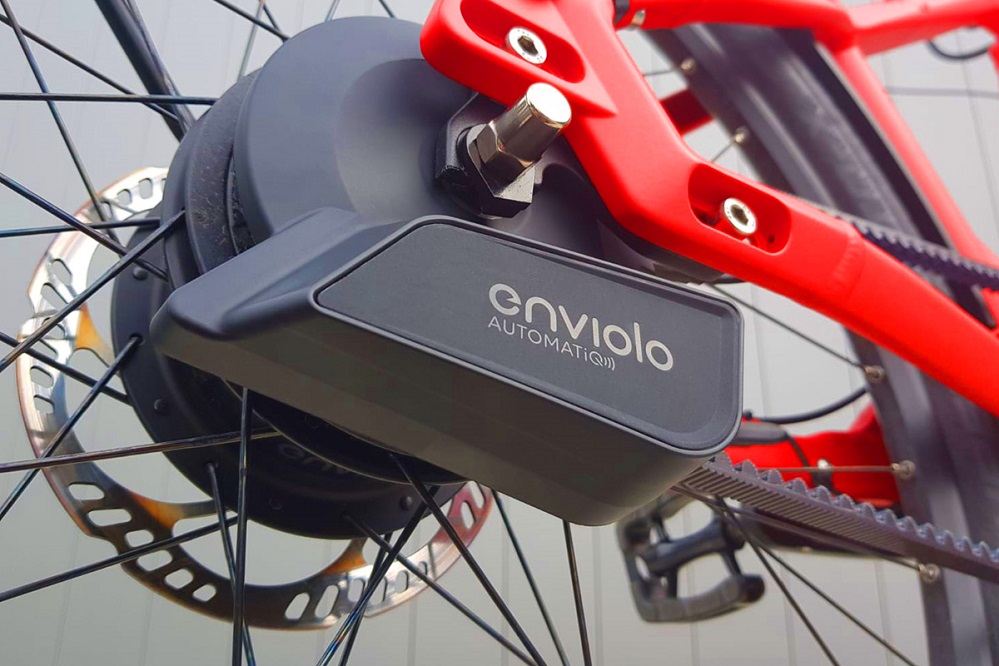Hey there, E-Bike enthusiasts! In our “Advanced E-Bike Riding Tips” section, we’re here to take you beyond the basics and dive into the world of advanced riding techniques. In this article, we’re focusing on gear shifting techniques specifically designed for intermediate to advanced e-bike riders. Whether you’re using your e-bike for commuting, touring, mountain biking, or even racing, there’s always room to learn and grow. We’ll guide you through the intricacies of gear shifting, from optimizing for speed and efficiency to understanding the technology behind it. Get ready to take your e-bike riding to the next level with these advanced gear shifting techniques!

1. The Basics of Gear Shifting
Gear shifting is an integral part of riding an e-bike, as it allows you to maintain an optimal cadence and control your speed. Understanding the basics of gear shifting is crucial for a smooth and enjoyable riding experience.
1.1 Understanding Gear Ratios
Gear ratios refer to the relationship between the number of teeth on the front chainring and the rear cassette. Each gear ratio provides a different level of resistance, allowing you to pedal more efficiently based on the terrain and your desired speed.
Larger chainrings and smaller cogs on the cassette result in higher gear ratios, which are ideal for flat terrain or high speeds. On the other hand, smaller chainrings and larger cogs provide lower gear ratios, suitable for uphill climbs or lower speeds.
By understanding gear ratios, you can choose the appropriate gear combination to optimize your pedaling efficiency and maintain a comfortable cadence.
1.2 Knowing Your Bike’s Gear System
Before diving into advanced gear shifting techniques, it’s important to familiarize yourself with your e-bike’s gear system. Most e-bikes feature a derailleur gear system, which consists of a chain, chainrings, cassette, and derailleurs.
The front derailleur is responsible for shifting the chain between the front chainrings, while the rear derailleur moves the chain across the different cogs on the rear cassette. It’s important to know how to operate these components correctly to ensure smooth gear shifting.
1.3 Importance of Proper Gear Shifting
Proper gear shifting not only improves your riding efficiency but also prolongs the lifespan of your drivetrain components. When you shift gears smoothly and at the appropriate time, you reduce the strain on the chain and minimize the risk of chain slippage or damage.
Moreover, using the correct gear ratios for different terrains can prevent excessive fatigue and improve your overall riding experience. By utilizing the right gear, you can maintain a steady cadence and conserve energy, allowing you to ride longer distances without feeling overly tired.
2. Shifting Gears Efficiently
Efficient gear shifting is the key to maintaining a smooth and comfortable riding experience. By following some simple techniques, you can minimize gear skipping and enhance your overall control on the bike.
2.1 Smooth Gear Transitions
When shifting gears, it’s important to apply a steady and consistent force to the pedals. Avoid sudden and forceful pedal strokes when changing gears, as this can cause the chain to slip or jump.
Instead, anticipate your gear changes by easing off the pressure on the pedals for a split second before shifting. Once you’ve shifted, gradually apply pressure again to ensure a smooth transition.
2.2 Timing Your Gear Shifts
Timing your gear shifts is crucial to maintaining an efficient cadence. When approaching a hill or anticipating a change in terrain, it’s best to shift into a lower gear beforehand to prevent any sudden loss of momentum.
Similarly, when descending or riding on flat terrain, shifting into a higher gear can help you maintain a faster pace. It’s important to anticipate these changes and make your gear shifts early enough to avoid any abrupt changes in cadence.
2.3 Using Both Hands on the Handlebars
While shifting gears, it’s important to maintain control and stability by keeping both hands on the handlebars. This ensures that you have complete control over the bike and can react to any sudden changes in the terrain or traffic.
Avoid shifting gears while steering or maneuvering through tight corners, as this can throw off your balance and compromise your safety. Instead, try to shift gears during straight sections of the ride or when you have a clear line of sight.
3. Anticipating Gear Changes
Anticipating gear changes is a key skill to develop as an advanced e-bike rider. By assessing the terrain, predicting changes in speed, and planning ahead, you can make smooth and efficient gear shifts.
3.1 Assessing the Terrain
Before embarking on a ride, take a moment to assess the terrain and identify any potential challenges such as steep climbs, descents, or technical sections. Familiarize yourself with the elevation profile of the route and mentally map out where you may need to shift gears.
By understanding the terrain, you can pre-select the appropriate gear combinations and be prepared for any changes in resistance or speed.
3.2 Predicting Changes in Speed
Along with assessing the terrain, it’s also important to predict changes in speed. For example, if you’re approaching a downhill section, you can anticipate an increase in speed and shift into a higher gear to maintain control.
Similarly, when approaching a climb, predicting a decrease in speed allows you to shift into a lower gear beforehand, preventing any sudden loss of momentum.
3.3 Planning Ahead for Climbs and Descents
For more challenging climbs and descents, it’s crucial to plan ahead and select the proper gear ratios. As you approach a climb, shift into a lower gear to maintain a comfortable cadence and prevent excessive strain on your muscles.
On the contrary, before descending, shift into a higher gear to ensure you can control your speed effectively and prevent the need for constant braking.
4. Advanced Shifting Techniques
Once you’ve mastered the basics of gear shifting, you can explore advanced techniques to further improve your riding experience. These techniques include preemptive gear shifting, double shifting, skip shifting, and gear shifting under load.
4.1 Preemptive Gear Shifting
Preemptive gear shifting involves shifting to a higher or lower gear before encountering a change in terrain. By doing so, you can minimize the disruption to your cadence and maintain a steady pedaling rhythm.
For example, if you’re approaching a hill, preemptively downshift to a lower gear to ensure a smooth transition. This technique is especially beneficial for maintaining momentum and preventing unnecessary exertion.
4.2 Double Shifting
Double shifting refers to shifting twice in rapid succession to quickly change gears and maintain momentum. This technique is useful when you need to make a sudden increase in speed or accelerate quickly.
To execute a double shift, first shift into a higher gear by pushing the shifter once, and then immediately follow it up with another shift to an even higher gear. This technique allows for a seamless transition to a higher gear ratio, resulting in improved acceleration and speed.
4.3 Skip Shifting
Skip shifting involves skipping one or more gears to quickly find the desired gear ratio. This technique is especially useful when transitioning between flat terrain and climbs or vice versa.
To skip shift, simply push the shifter multiple times in one swift motion, jumping over intermediate gears. This technique allows for a more efficient gear change and eliminates the need to shift through multiple gears individually.
4.4 Gear Shifting Under Load
Gear shifting under load refers to changing gears while applying pressure on the pedals, such as when climbing a steep hill or sprinting. This technique requires precision and coordination to avoid causing damage to the drivetrain.
When shifting gears under load, it’s important to momentarily ease off the pressure on the pedals before shifting. This allows the chain to move smoothly across the gears without excessive strain or resistance.

5. Utilizing Di2 or Electronic Gear Shifting
Electronic gear shifting systems, such as Shimano’s Di2, offer advanced features and benefits over traditional mechanical shifting systems. Understanding how to use these systems can enhance your gear shifting experience.
5.1 Understanding Di2 Technology
Di2 technology utilizes electronic components to control the shifting of gears. It eliminates the need for manual cable actuation and provides precise, reliable, and consistent gear shifts.
By incorporating sensors and microprocessors, Di2 systems can automatically adjust shifting based on factors such as cadence, chain position, and terrain. This technology allows for seamless, effortless shifting, enhancing the overall riding experience.
5.2 Benefits of Electronic Gear Shifting
Electronic gear shifting systems offer several benefits over mechanical systems. Firstly, they provide precise and accurate gear shifts, ensuring minimal gear skipping or misalignment.
Additionally, electronic shifting requires less maintenance and adjustment compared to traditional mechanical systems. Since there are no cables to stretch or housing to wear out, the shifting performance remains consistent over time.
5.3 Customization and Adjustment
Di2 systems offer various customization options, allowing riders to tailor their shifting preferences. With the use of a compatible computer or mobile app, you can fine-tune factors such as shift speed, multi-shift options, and button function assignments.
It’s important to familiarize yourself with the customization options and adjust the settings according to your specific riding style and preferences.
6. Proper Maintenance of Gear Systems
To ensure optimal performance and longevity of your gear system, regular maintenance is crucial. By following a few maintenance practices, you can keep your gears in top condition.
6.1 Cleaning and Lubrication
Regularly clean and lubricate your chain and cassette to remove dirt, grime, and excess lubricant. Use a clean rag or specialized chain cleaning tool to remove any debris from the chain and cogs.
Apply a suitable lubricant to the chain, ensuring it is evenly distributed. Excess lubricant should be wiped off to prevent attracting more dirt.
6.2 Cable and Housing Inspection
Inspect the cables and housing regularly for signs of wear, fraying, or corrosion. Damaged cables should be replaced, as they can lead to poor shifting performance or even complete failure.
Check that the housing is properly seated and aligned, without any kinks or sharp bends. Lubricate the cables as necessary to ensure smooth movement and effortless shifting.
6.3 Adjusting the Derailleurs
Periodically check and adjust the derailleurs to ensure accurate shifting. Proper derailleur adjustments involve aligning the derailleur hanger, setting the limit screws, and adjusting the cable tension.
If you’re unsure about the proper adjustment procedures, consult the manufacturer’s documentation or seek assistance from a professional bike mechanic.

7. Troubleshooting Gear Shifting Issues
Even with proper maintenance, gear shifting issues can occasionally arise. Understanding common problems and their solutions can help you address these issues effectively.
7.1 Diagnosing Common Shifting Problems
Some common shifting problems include skipping gears, sluggish shifting, or the chain not moving smoothly across the cassette. These issues can be caused by factors such as cable tension, derailleur alignment, or worn-out components.
By diagnosing the exact problem, you can determine the appropriate solution and avoid further damage to your gear system.
7.2 Adjusting Cable Tension
Incorrect cable tension can lead to poor shifting performance. If you notice slow or incomplete shifts, adjusting the cable tension may solve the issue.
Use the barrel adjuster on the derailleur or shifters to fine-tune the cable tension. Make small adjustments and test the shifting after each adjustment to find the optimal setting.
7.3 Aligning the Derailleur Hanger
A misaligned derailleur hanger can cause shifting problems, such as inaccurate gear changes or difficulty shifting to certain gears. If you suspect a misalignment, it’s best to seek assistance from a professional bike mechanic who can properly align the hanger using specialized tools.
8. Advanced Techniques for E-Bike Racing
E-bike racing requires additional skills and techniques to maximize speed and performance. By applying specific gear shifting techniques, you can gain a competitive edge in races.
8.1 Gear Shifting in Sprints
During intense sprints in e-bike races, efficient gear shifting is crucial to accelerate quickly and maintain momentum. By leveraging double shifting or skip shifting techniques, you can rapidly shift through gears and achieve maximum speed.
Practice these techniques in training sessions to improve your shifting speed and timing, ensuring you’re ready for high-speed sprints during races.
8.2 Gear Strategy for Uphill Climbs
In e-bike races featuring uphill sections, having a well-planned gear strategy is essential. Anticipate the climb in advance and shift to a lower gear ratio to maintain a comfortable cadence and prevent exertion.
As the climb becomes steeper, consider preemptively downshifting to an even lower gear, maximizing your ability to ascend with less effort. Experiment with different gear ratios during training rides to find the most efficient combination for various types of uphill climbs.
8.3 Downshifting for Optimal Cornering
When approaching sharp corners or bends in e-bike races, downshifting to a lower gear can provide better control and maneuverability. Lower gears allow for quicker acceleration out of corners, ensuring a seamless transition from deceleration to acceleration.
By practicing downshifting techniques during training rides, you can master the art of smooth and efficient cornering, shaving off valuable seconds in races.

9. Specialty Gear Shifting for Mountain Biking
Mountain biking demands specific gear shifting techniques due to the unpredictable and technical nature of off-road terrain. Mastering these techniques can improve your performance and ensure a safe and enjoyable ride.
9.1 Gear Selection for Technical Trails
When tackling technical trails, it’s essential to choose the appropriate gear ratios for optimal control and power delivery. Select a gear combination that provides a balance between torque and cadence, allowing you to clear obstacles and navigate challenging terrain.
Experiment with different gear ratios during practice rides to find the most suitable combination for your riding style and the specific characteristics of the trail.
9.2 Gear Shifting for Jumps and Drops
When approaching jumps or drops on a mountain bike, gear shifting plays a crucial role in maintaining stability and control. Downshifting before jumps allows for a more efficient pedal stroke and better control during takeoff and landing.
Before hitting a drop, preemptively downshift into a lower gear to generate more power and torque upon landing. This allows for quick acceleration and helps absorb the impact more efficiently.
9.3 Shifting in Extreme Conditions
Mountain biking often involves riding in extreme conditions, such as muddy or slippery trails. In these scenarios, it’s essential to anticipate changes in speed and adjust your gear ratio accordingly.
By shifting to a lower gear ratio, you can maintain traction and prevent wheel spin on slippery surfaces. Additionally, using a higher gear ratio when navigating through mud can prevent the accumulation of debris on the drivetrain, reducing the risk of chain jams or damage.
10. Advanced Gear Shifting for Long-Distance Touring
Long-distance touring on an e-bike requires efficient gear shifting techniques to maximize energy conservation and comfort. Here are some tips to enhance your gear shifting experience during long rides.
10.1 Gear Selection for Efficiency
Efficiency is key when it comes to long-distance touring. Select gear ratios that allow you to maintain a steady cadence without overexerting yourself.
Aim for a combination of gears that provides a balance between torque and speed. This allows you to tackle various terrains while conserving energy over extended distances.
10.2 Managing Gear Fatigue
During long rides, it’s common to experience gear fatigue, where certain gear combinations become less effective or comfortable over time. To combat this, periodically shift into different gear ratios to redistribute the load on your muscles and prevent excessive fatigue.
Listen to your body and adjust your gear selection accordingly. By frequently changing gears, you can alleviate muscle strain and maintain a consistent level of performance throughout your tour.
10.3 Shifting for Changing Terrain
Throughout a long-distance tour, you’ll encounter a diverse range of terrains, each requiring a different gear ratio for optimal performance. Anticipate changes in terrain and shift gears preemptively to adapt to the upcoming challenges.
Regularly assess the terrain ahead and shift accordingly, allowing for a seamless transition from one type of terrain to another. By being proactive in your gear shifting, you can maintain a comfortable cadence and enjoy a smoother overall ride.
As an intermediate to advanced e-bike rider, mastering advanced gear shifting techniques can greatly enhance your riding experience. By understanding gear ratios, perfecting your shifting techniques, and anticipating gear changes, you can achieve optimal performance, efficiency, and control on your e-bike. Have fun exploring the world of advanced gear shifting techniques, and remember to always prioritize safety and proper maintenance of your gear system. Happy riding!




